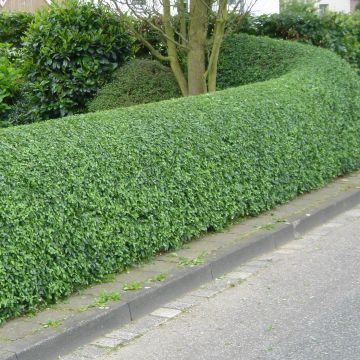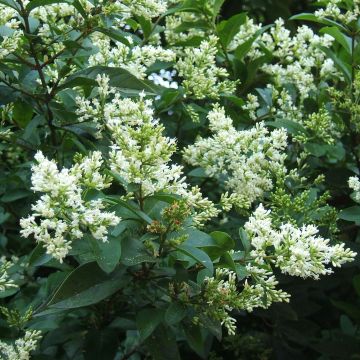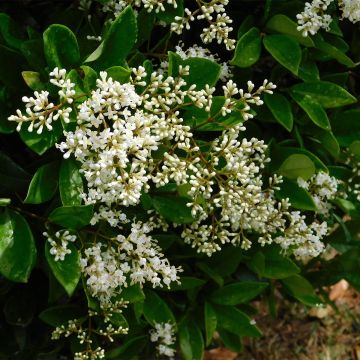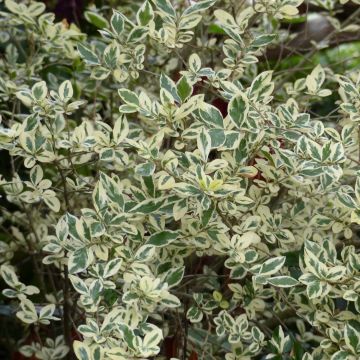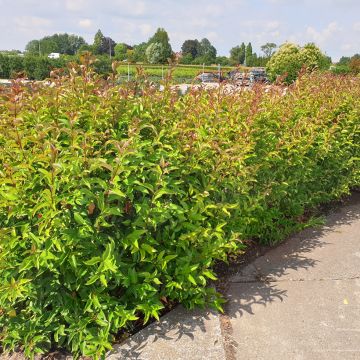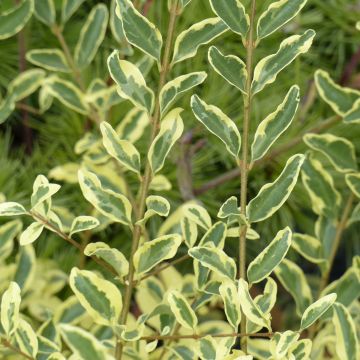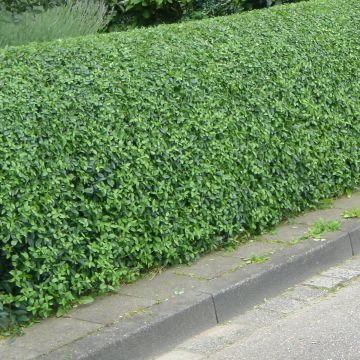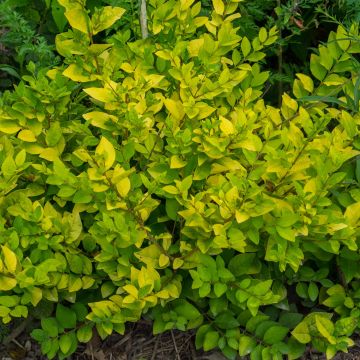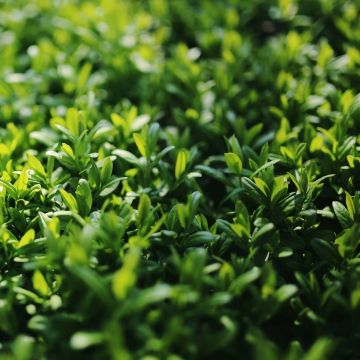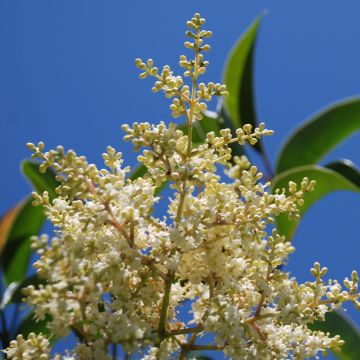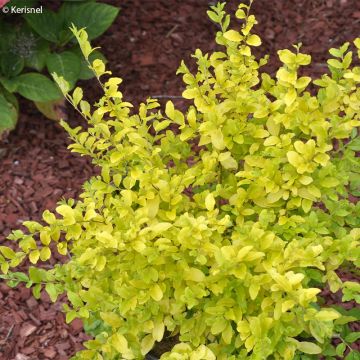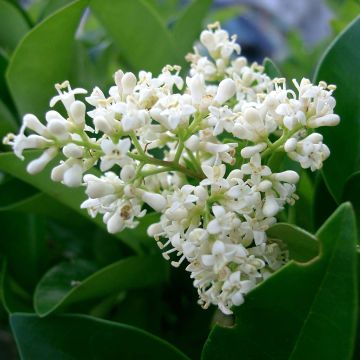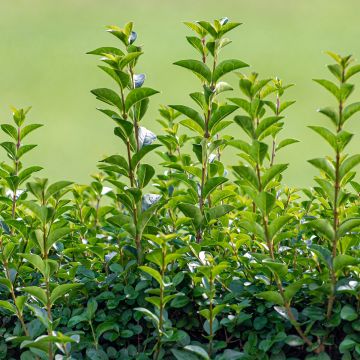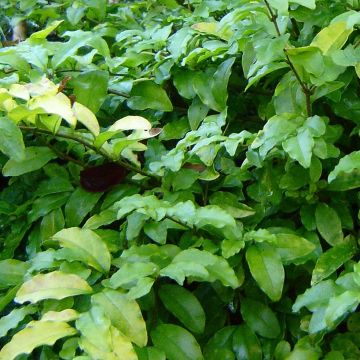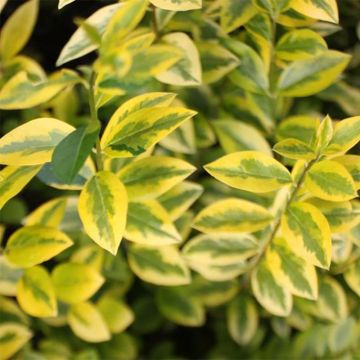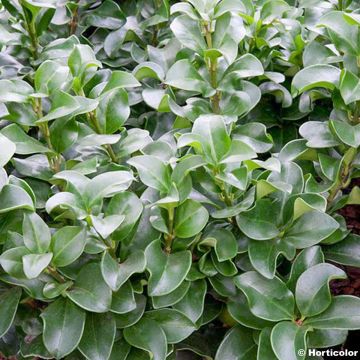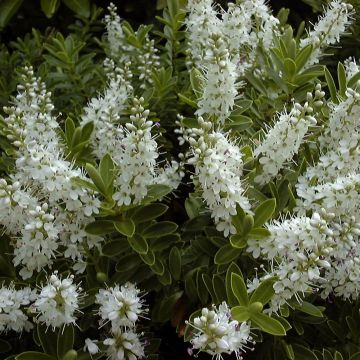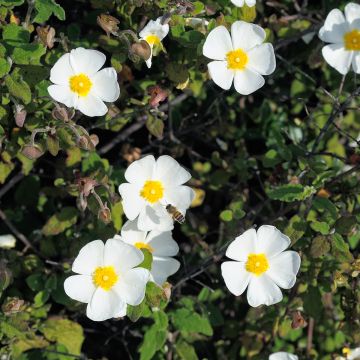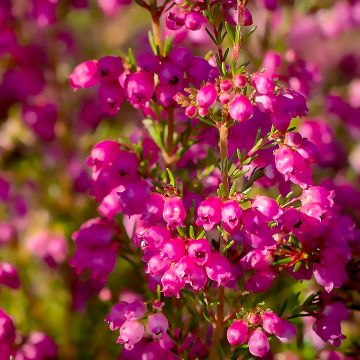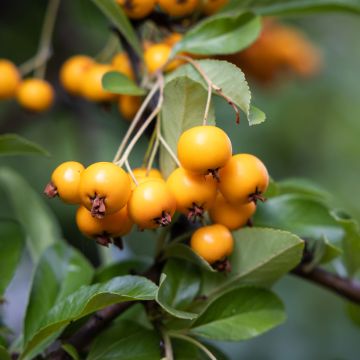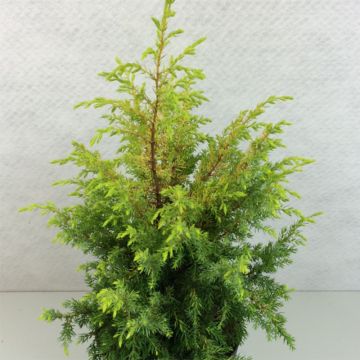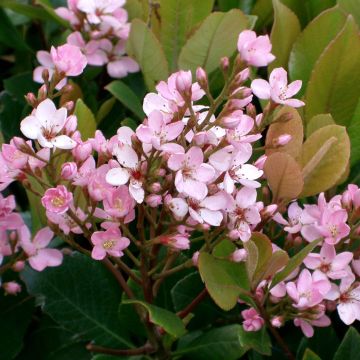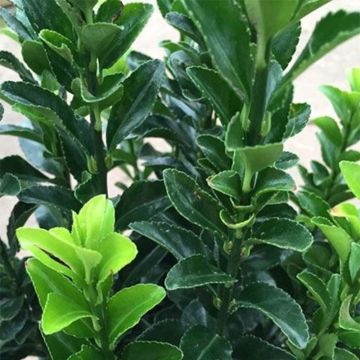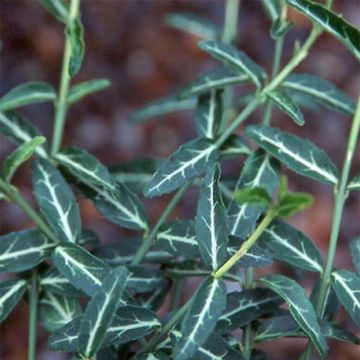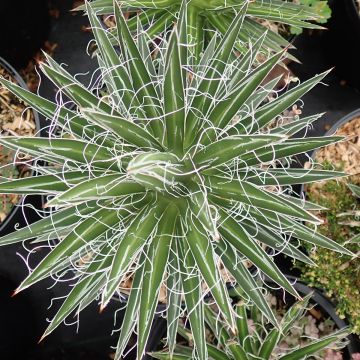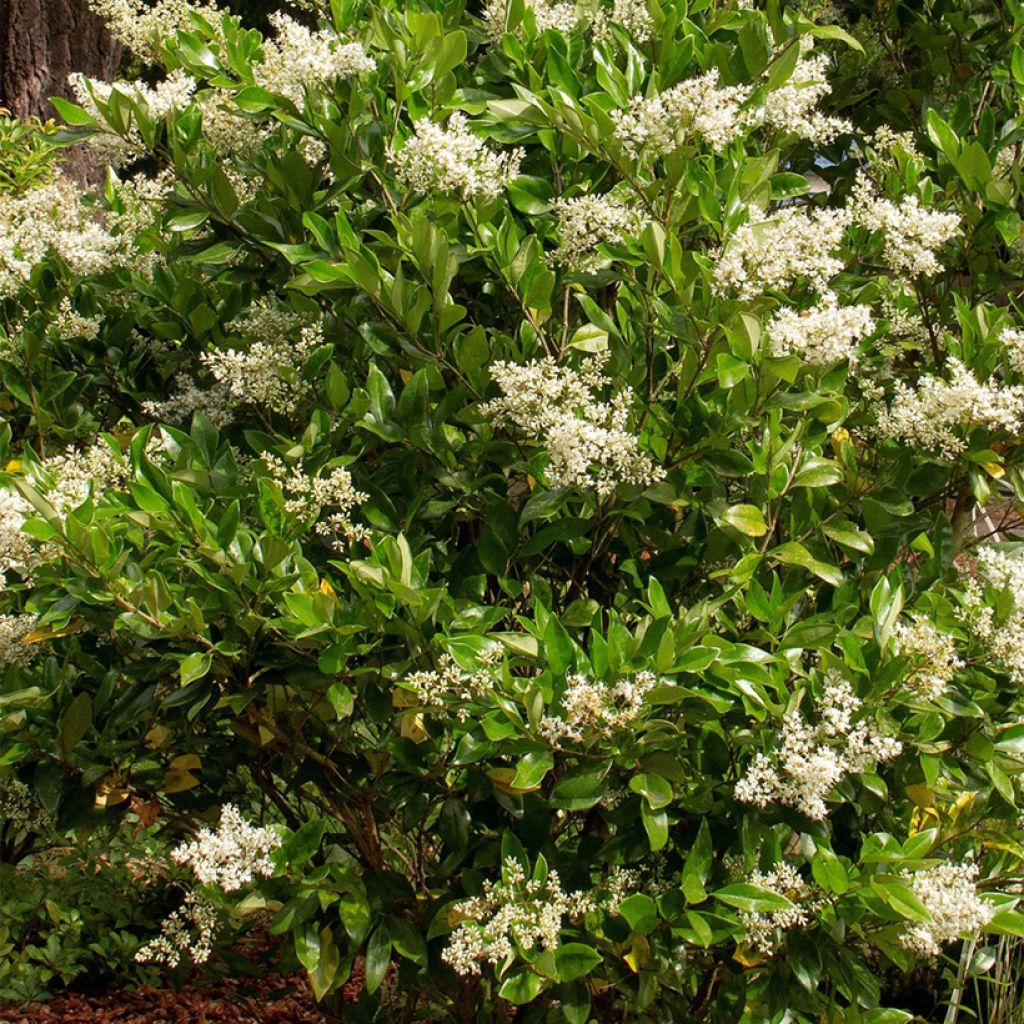

Ligustrum Korean Dwarf
Ligustrum Korean Dwarf
Ligustrum japonicum Korean Dwarf
Privet
Why not try an alternative variety in stock?
View all →This plant carries a 24 months recovery warranty
More information
We guarantee the quality of our plants for a full growing cycle, and will replace at our expense any plant that fails to recover under normal climatic and planting conditions.
From €5.90 for pickup delivery and €6.90 for home delivery
Express home delivery from €8.90.
Does this plant fit my garden?
Set up your Plantfit profile →
Description
Ligustrum japonicum 'Korean Dwarf' is a dwarf variety of the Japanese Privet. It has a relatively slow growth and modest size, with a rounded and bushy habit. In summer, it produces cream-white panicle flowers resembling lilacs, followed by black berries. Both attract and feed pollinating insects and birds. Privet is hardy and as easy to grow as boxwood, which it can replace. Ideal for hedges or topiaries, in a zen or contemporary garden, or in containers on the terrace.
Ligustrum japonicum is an evergreen shrub from the olive family, native to Korea and Japan. 'Korean Dwarf' is a horticultural selection known for its smaller size and conical cluster flowering. The bushy plant reaches 1 to 1.50 metres in all directions after several years. Its rather upright branches bear opposite leaves throughout the year. The leaves are entire, ovate, leathery, glossy, wavy, dark green and 4 to 10 cm long. Flowering occurs in July-August in the form of conical, 10 to 15 cm long clusters at the ends of the branches. Each inflorescence consists of dozens of small cream-white, fragrant, and nectar-rich flowers. They give way to black berries, provided the shrub is not pruned. All parts of the privet are toxic if ingested.
Ligustrum japonicum 'Korean Dwarf' is elegant and decorative all year round, and can be used for hedges, as a standalone plant, in flower beds, or in containers. Its moderate growth eliminates the need for pruning, even when planted in a boundary hedge. However, if desired, it tolerates pruning well, is perfect for topiary, and can effectively replace boxwood. It can also be paired with other easy-to-grow shrubs, such as evergreen viburnums, Abelias, Aucuba, Berberis.
Report an error about the product description
Plant habit
Flowering
Foliage
Botanical data
Ligustrum
japonicum
Korean Dwarf
Oleaceae
Privet
Cultivar or hybrid
Other Ligustrum - Privet
Planting and care
Ligustrum japonicum is best planted in spring or autumn with 80cm spacing for hedges. Dig a hole two and a half times the size of the pot, loosen the bottom and add a large handful of horticultural compost or mix slow-release fertiliser with loose soil. Water well, especially in the first summers, mulch the soil to keep it cool, and prune the branches by half to encourage new shoots. Then, every year, prune the new shoots by half to promote branching in your hedge. This bush is not very demanding in terms of soil and will even adapt to poor and chalky soil. Once well established, it can go without watering in summer in most regions. Privets are quite resistant to parasites and diseases. However, they can be affected by weevil larvae or caterpillars.
Planting period
Intended location
Care
This item has not been reviewed yet - be the first to leave a review about it.
Evergreen shrubs
Haven't found what you were looking for?
Hardiness is the lowest winter temperature a plant can endure without suffering serious damage or even dying. However, hardiness is affected by location (a sheltered area, such as a patio), protection (winter cover) and soil type (hardiness is improved by well-drained soil).

Photo Sharing Terms & Conditions
In order to encourage gardeners to interact and share their experiences, Promesse de fleurs offers various media enabling content to be uploaded onto its Site - in particular via the ‘Photo sharing’ module.
The User agrees to refrain from:
- Posting any content that is illegal, prejudicial, insulting, racist, inciteful to hatred, revisionist, contrary to public decency, that infringes on privacy or on the privacy rights of third parties, in particular the publicity rights of persons and goods, intellectual property rights, or the right to privacy.
- Submitting content on behalf of a third party;
- Impersonate the identity of a third party and/or publish any personal information about a third party;
In general, the User undertakes to refrain from any unethical behaviour.
All Content (in particular text, comments, files, images, photos, videos, creative works, etc.), which may be subject to property or intellectual property rights, image or other private rights, shall remain the property of the User, subject to the limited rights granted by the terms of the licence granted by Promesse de fleurs as stated below. Users are at liberty to publish or not to publish such Content on the Site, notably via the ‘Photo Sharing’ facility, and accept that this Content shall be made public and freely accessible, notably on the Internet.
Users further acknowledge, undertake to have ,and guarantee that they hold all necessary rights and permissions to publish such material on the Site, in particular with regard to the legislation in force pertaining to any privacy, property, intellectual property, image, or contractual rights, or rights of any other nature. By publishing such Content on the Site, Users acknowledge accepting full liability as publishers of the Content within the meaning of the law, and grant Promesse de fleurs, free of charge, an inclusive, worldwide licence for the said Content for the entire duration of its publication, including all reproduction, representation, up/downloading, displaying, performing, transmission, and storage rights.
Users also grant permission for their name to be linked to the Content and accept that this link may not always be made available.
By engaging in posting material, Users consent to their Content becoming automatically accessible on the Internet, in particular on other sites and/or blogs and/or web pages of the Promesse de fleurs site, including in particular social pages and the Promesse de fleurs catalogue.
Users may secure the removal of entrusted content free of charge by issuing a simple request via our contact form.
The flowering period indicated on our website applies to countries and regions located in USDA zone 8 (France, the United Kingdom, Ireland, the Netherlands, etc.)
It will vary according to where you live:
- In zones 9 to 10 (Italy, Spain, Greece, etc.), flowering will occur about 2 to 4 weeks earlier.
- In zones 6 to 7 (Germany, Poland, Slovenia, and lower mountainous regions), flowering will be delayed by 2 to 3 weeks.
- In zone 5 (Central Europe, Scandinavia), blooming will be delayed by 3 to 5 weeks.
In temperate climates, pruning of spring-flowering shrubs (forsythia, spireas, etc.) should be done just after flowering.
Pruning of summer-flowering shrubs (Indian Lilac, Perovskia, etc.) can be done in winter or spring.
In cold regions as well as with frost-sensitive plants, avoid pruning too early when severe frosts may still occur.
The planting period indicated on our website applies to countries and regions located in USDA zone 8 (France, United Kingdom, Ireland, Netherlands).
It will vary according to where you live:
- In Mediterranean zones (Marseille, Madrid, Milan, etc.), autumn and winter are the best planting periods.
- In continental zones (Strasbourg, Munich, Vienna, etc.), delay planting by 2 to 3 weeks in spring and bring it forward by 2 to 4 weeks in autumn.
- In mountainous regions (the Alps, Pyrenees, Carpathians, etc.), it is best to plant in late spring (May-June) or late summer (August-September).
The harvesting period indicated on our website applies to countries and regions in USDA zone 8 (France, England, Ireland, the Netherlands).
In colder areas (Scandinavia, Poland, Austria...) fruit and vegetable harvests are likely to be delayed by 3-4 weeks.
In warmer areas (Italy, Spain, Greece, etc.), harvesting will probably take place earlier, depending on weather conditions.
The sowing periods indicated on our website apply to countries and regions within USDA Zone 8 (France, UK, Ireland, Netherlands).
In colder areas (Scandinavia, Poland, Austria...), delay any outdoor sowing by 3-4 weeks, or sow under glass.
In warmer climes (Italy, Spain, Greece, etc.), bring outdoor sowing forward by a few weeks.

































